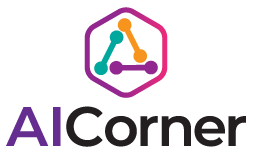Smart home technology has transformed how we experience our living spaces in recent years. Innovations such as voice-controlled lighting and automated thermostat, to name a few have made our homes more comfortable, efficient and widely convenient. But the next big leap in smart home tech is also just around the corner — personal assistants powered by AI. These more-sophisticated systems will turn our traditional homes into genuinely smart spaces, ready to predict what we need and how best to cater for us on a day-to-day basis.
The evolution of smart home assistants
Smart home assistants were born as voice-activated devices such as Amazon’s Alexa and Google Home started making their ways into homes. The early versions of these devices were able to do basic tasks like playing music, creating timers and getting the weather updates. While functional, they lacked contextual awareness and response functionality or the learning from user behavior to answer complex questions.
The new generation of AI-based virtual assistants are a quantum leap from even these systems. Utilising more sophisticated machine learning models, natural language processing and huge amounts of data at its disposal these systems can deliver unprecedented levels of personalisation and intelligence.
Key features of AI-powered personal assistants
1. Contextual awareness
Next-gen AI assistants differ than their predecessors in that they can actually understand and interpret the context of your query. It can consider things like time of day, whether you’re in the house or have left and how happy an emotion to give more real-time appropriate responses.
2. Predictive capabilities
Artificial assistants learn your behavior and preferences to predict what you want before asking. For instance, they could turn the heat down in your house as you leave work or recommend recipes depending on what is sitting in your fridge and any dietary restrictions.
3. Multi-modal interaction
In the form of voice commands is where we get introduced to advanced AI system assistants. They are able to communicate with end users via voice, text, gestures and even facial expressions. This multi-modal system allows for natural and intuitive communication between humans to smart home systems.
4. Seamless integration with IoT devices
This is increasingly the case, as on one side of things AI technologies have matured and improve dramatically with access to more user data (mainly region-specific data), speech recognition rates are through the roof now coupled with fast internet speeds nowadays. These assistants will not only allow more natural gesture and voice control over your home, whether that be managing energy consumption or running complex routines involving half a dozen different devices — they’ll also make sure you to do it in the simplest way possible.
5. Continuous learning and adaptation
But I think the most interesting thing about these new assistants is that they can learn and evolve. Through machine learning algorithms that continuously get better, not only can they fine tune the way they serve what you like (and don’t), but it would be possible for them to help in ways you never knew because your needs have changed and so too has their serving.
Practical applications in the smart home
The range of possibilities for AI-centered personal assistants in the smart home is staggering. These systems have the potential to revolutionize our daily lives in hundreds of ways — here are just a few examples.
Sophisticated energy management: AI can analyze historical patterns in your power usage and work with smart meters plus appliances to reduce the environmental impact of your home while saving you a considerable amount on electricity bills.
Dynamic health and wellness: Health coaches that could delegate a plethora of biometrics via IoT, nutrition advice tailored to your specific needs, Tele-Med visits for early detection.
Increased Home Security: AI-driven systems and machines can study your normal behavior while relaxing at home and provide alerts in case of a breach or strange thing happening around your house.
Scheduled repairs: The app will automatically schedule, and order parts for your smart appliances if anything needs to be repaired; with the help of connected senses it also can inform you in advance or right that exact moment something failed.
Personalized Content Recommendations — AI-assistants help in sorting through content from different channels, recommend playlists which are tailor-fit for you and even set the right lighting and volume based on your mood.
Challenges and considerations
The potential is limitless for AI-powered personal assistants but several challenges need to be overcome such as:
As the systems that collect and process this information are going to deal with a huge data load, protecting privacy is increasingly more difficult but at the same time even more important.
Privacy Issues: The more complex AI assistants, the greater concerns about where decision-making autonomy stays and how to sense ethics in our day-to-day lives from artificial intelligence.
Interoperability — Wide acceptance will require these assistants to work with devices across a bunch of differing manufacturers and platforms.
Trust and acceptance among users: Manufacturers and developers will continue to face challenges in building confidence in AI systems at home and breaking any “automation fatigue” virus that might hinder increasing automation of functionalities.
Conclusion
AI Human Personal Assistants — The Next Frontier in Smart Home Technology? These systems have the ability to make our homes become something closer to smart environments: intelligently programmed so they can recognize and learn behaviors of users, with each other or not-connected elements such as air conditioners that use wifi ) establish anticipatory needs.
This complete technology revolution would ensure that our homes were not just smart but intelligent life partners. AI has arrived in the smart home landscape.

